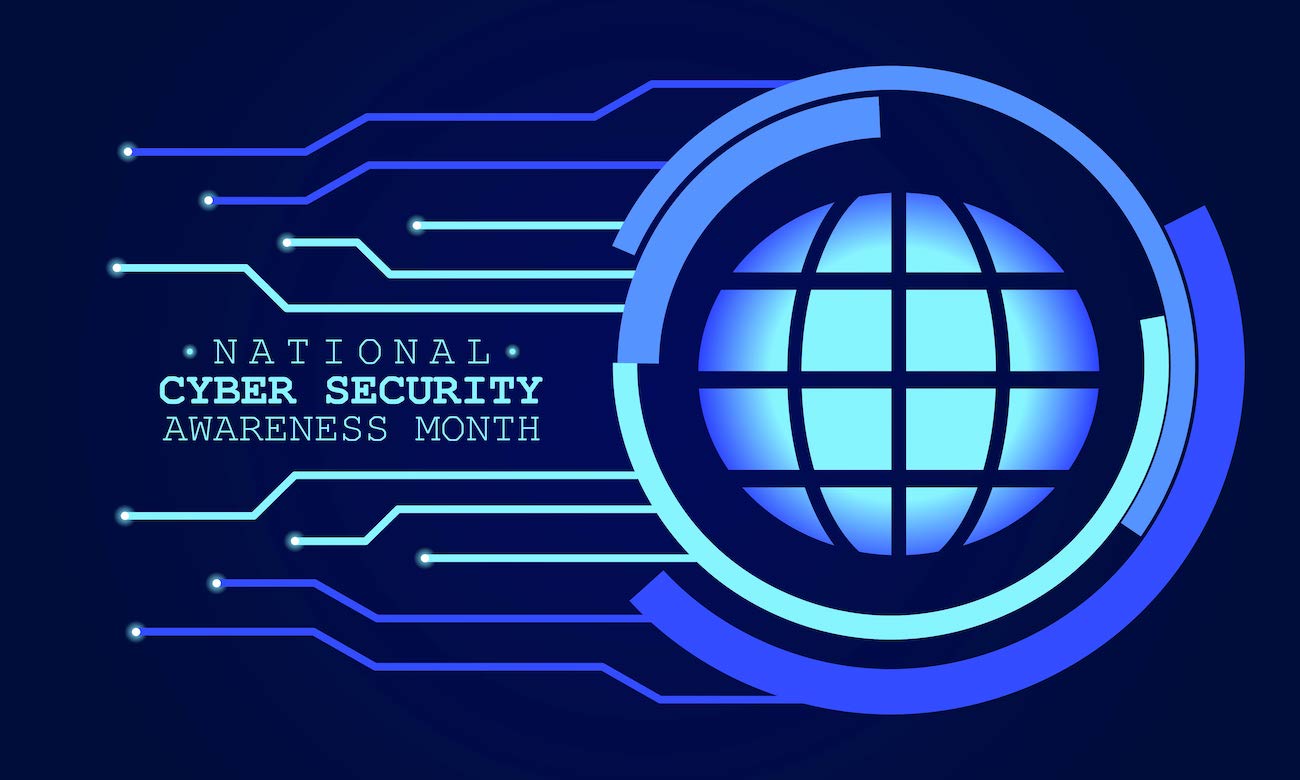
Cybersecurity Awareness Month is an annual campaign that focuses on raising awareness about online safety practices and resources. It provides education to help reduce security risks, enabling consumers and businesses to adopt good digital habits in the war against cybercrime.
The theme chosen for 2020’s Cybersecurity Awareness Month is “Do Your Part. #BeCyberSmart.” In this article, we’ll review the top takeaways from the 2020 campaign, including each week’s unique theme and how to adopt them in your workplace.
What Is National Cybersecurity Awareness Month (NCAM)?
With cyberattacks increasing every year, boosting awareness about online security concerns became a necessary public service. National Cybersecurity Awareness Month, or NCAM, was created by the U.S. Department of Homeland Security (DHS) and the National Cyber Security Alliance (NCSA). Cybersecurity Awareness Month has been observed every October since 2004. It is now co-led by NCSA and the Cybersecurity and Infrastructure Agency (CISA).
Businesses, corporations and educational institutions now use NCAM resources to educate their employees, stakeholders and students on cybersecurity issues that affect computer usage at home, school and the workplace.
This year’s theme emphasizes the role of personal responsibility in protecting your internet-connected devices. Hackers and cybercriminals are adept at stealing data by breaking into systems via unprotected devices, so it’s crucial to take preventative measures in protecting yourself and your devices online.
Cybersecurity Awareness Month Weekly Themes
In 2011, the NCAM campaign implemented weekly themes that target four subjects sequentially, enabling a “deep dive” into subtopics deemed relevant to the central theme.
Past topics included password safety, phishing, malware protection, and careers in cybersecurity.
The 2020 Cybersecurity Awareness Month weekly themes are:
-
If You Connect It, Protect It
-
Securing Devices at Home and Work
-
Securing Internet-Connected Devices in Healthcare
-
The Future of Connected Devices
Week 1 (October 5-9): If You Connect It, Protect It
Being “connected” goes far beyond devices with keyboards. Refrigerators, light fixtures, thermostats and even coffee machines now connect to the internet via smartphones.
No one can afford to take online safety for granted. No matter the environment, taking steps to protect yourself and your devices is imperative. Empower yourself by understanding how you can shield your privacy, identity and devices wherever you are.
Takeaway #1: Be aware of your risks and proactively protect yourself.
Week 2 (October 12-16): Securing Devices at Home and Work
In 2019, total breaches were up 33% over the previous year, heavily affecting retailers, public entities and medical services. The blurred lines between home and work create security nightmares if safety protocols are ignored — or don’t exist.
Breaches that target businesses put customers at risk by exposing account numbers and sensitive data. Conversely, consumers falling prey to phishing scams while working from home affect company networks by transferring malware and viruses over internet connections. Successful cybersecurity requires adherence to established security measures.
Takeaway #2: Securing your devices thwarts hackers from infiltrating systems containing sensitive data.
Week 3 (October 19-23): Securing Internet-Connected Devices in Healthcare
Healthcare is one of the most sensitive industries for data infiltration. Over 2,550 data breaches of PHI (protected health information) have affected millions of records in the last ten years.
Healthcare breaches involve many types of internet-connected devices. However, most violations resulted from negligence vs. malicious intent. Maintaining strict security protocols like strong password policies and limiting access to sensitive information reduces data theft risk.
Takeaway #3: Alleviate healthcare data risk by enforcing strict security access and policies.
Week 4 (October 26-30): The Future of Connected Devices
With the speed of technology growing ever faster, it’s tough to forecast how our connected devices will shape the future. However, the development of 5G technology has already created concerns about expanded opportunities for hackers. Learn more about how to adapt to this changing landscape so that you can feel confident and empowered as we evolve in technology.
Takeaway #4: Educate yourself about technology advances and embrace change.
Tips for Implementing NCAM Takeaways In the Workplace
What’s the best way to share the top takeaways of Cybersecurity Awareness Month?
-
Be generous in sharing resources with your employees, students or stakeholders.
-
Publicize 2020’s theme, “Do Your Part. #BeCyberSmart.” Use corporate communication channels like email, social media and your website to spread the word.
-
Offer continuous cybersecurity training and education during NCAM and beyond.
-
Create BYOD policies for remote workers that enforce rules for securing internet-connected devices.
-
Protect your assets by having a reliable data backup and recovery strategy to protect against data loss due to cybercrime.
Investing in cybersecurity is no longer an option. Protecting your business against cyberattacks must be top of mind for long-lasting safety and success.
SugarShot is an L.A.-based managed services provider that helps your business take control of your cybersecurity systems, monitoring and software. Our thorough 63-point IT security risk assessment will identify your threats and vulnerabilities. We’ll help you establish processes and guidelines to protect your critical resources and future-proof your business.
To learn more about SugarShot’s cybersecurity services, contact us today.
Other News
Find out more
about Sugarshot USA



